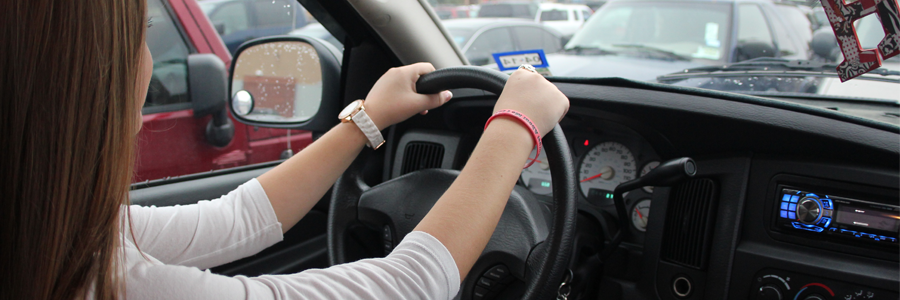Senior Justin Wright started driving in his junior year and got in an accident. A car rear ended him leaving Target on a Saturday morning after grocery shopping.
“It wasn’t that bad, I didn’t even have to repair anything,” Wright said. “I got her [the other driver’s] information and stuff to be safe, and then we went our separate ways.”
Driving symbolizes freedom and coming of age in a society where everyone has somewhere to go. For those preparing to get on the road, chemistry teacher and driver’s ed teacher Mr. Sudbury says there are basics every driver should remember. He advises students not to take too many people in their cars and to reduce distractions. The more distractions a driver has, the more likely he or she will have an accident.
“That’s the reason there’s a law against the number of people you can have in your car,” Sudbury said.
Car crashes make up 65 percent of teen deaths, and 35.3 percent of these fatal teen accidents are caused by going an unsafe speed. Teens make up only 6.7 percent of the drivers in the United States, but they are involved in about 14 percent of all crashes. The fatal crash rate of teenage drivers doubles at night according to Safe Road Alliance.
Sudbury also says to slow down on turns. During one of his classes, Sudbury sat in the passenger seat with a student going 50 mph on a 20 mph turn. As they rounded the corner a large dump truck appeared in their lane.
“It was the only instance where I thought, I am about to die,” Mr. Sudbury said. “I had to grab the wheel at that point, or we definitely would have been hit.”
One-quarter of the accidents resulting in teen deaths occur when a teen has a blood-alcohol concentration at or greater than 10.
“Obviously don’t drink and drive,” Sudbury said. “You’re underage, and it’s just a bad business to begin with.”
Research shows drivers who attend graduated licensing programs (GDL) significantly reduce the likelihood of being in a fatal crash. GDL systems are designed to keep new drivers from obtaining a license with no restrictions while they get their initial year of driving experience. Having a GDL limits the number of passengers a driver can have at any time and restricts driving between midnight to 5 a.m.
GEICO stresses the importance of having the right attitude about driving, and to make a commitment to being responsible while driving. They also want young drivers to know they shouldn’t be on their cell phones unless it is an absolute emergency. Cell phones create an unnecessary distraction.
“Always wear your seatbelt and don’t text,” Sudbury said. “Just make sure you have as few distractions as possible.”
All of these stats could be the reason teen drivers have the highest insurance rates of any other drivers, and the rates go up exponentially when they are at fault in a wreck. A small accident can send a young driver’s insurance rate soaring as much as 25% of what it was originally. However, having GPA that is 3.0 or higher is a good indicator to insurance companies that the student is responsible, which can lead to lower insurance rates as well.
“Teens need to be especially careful not to get in wrecks,” Sudbury said, “because getting in a wreck at this age sends your insurance skyrocketing.”




